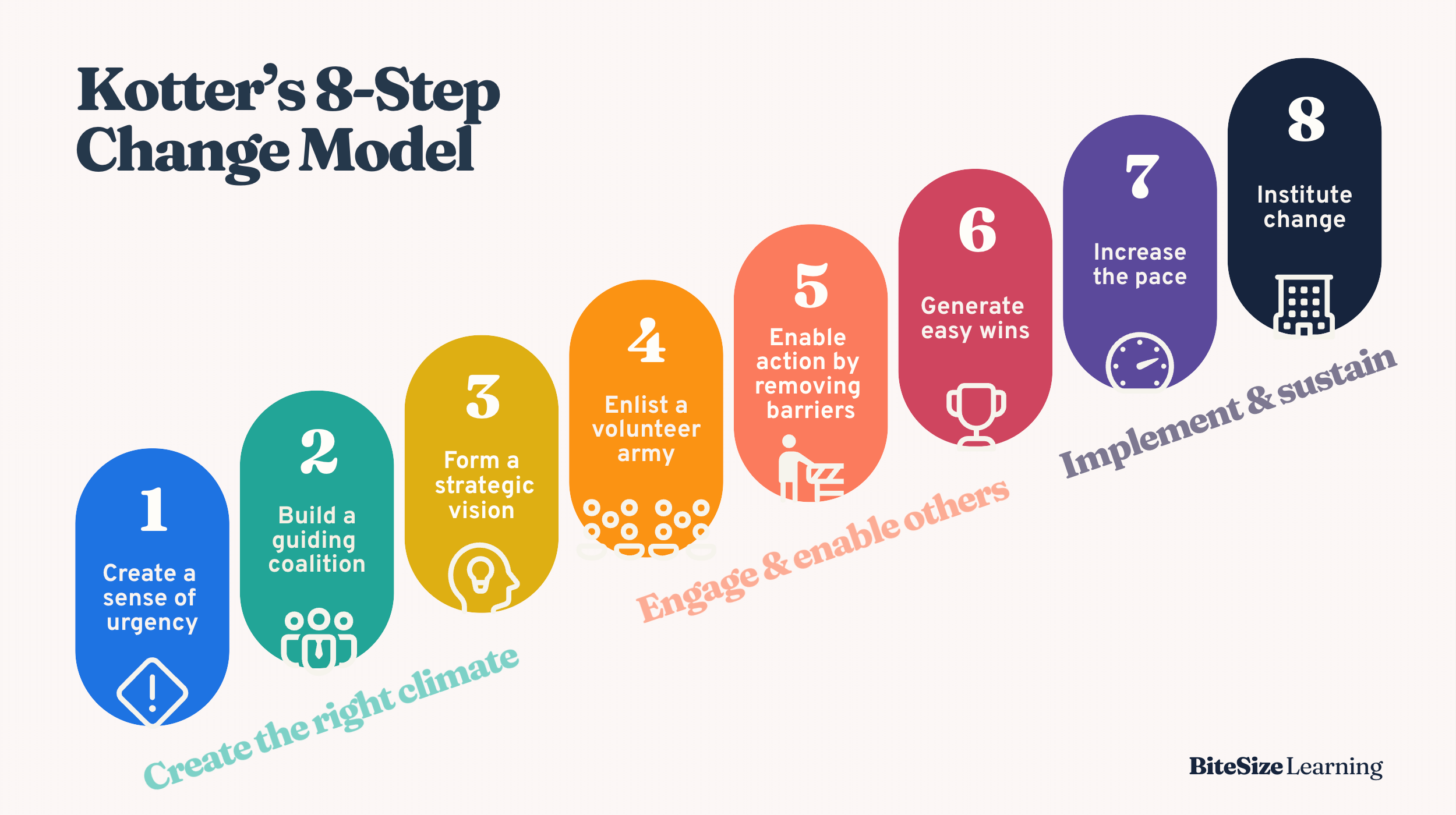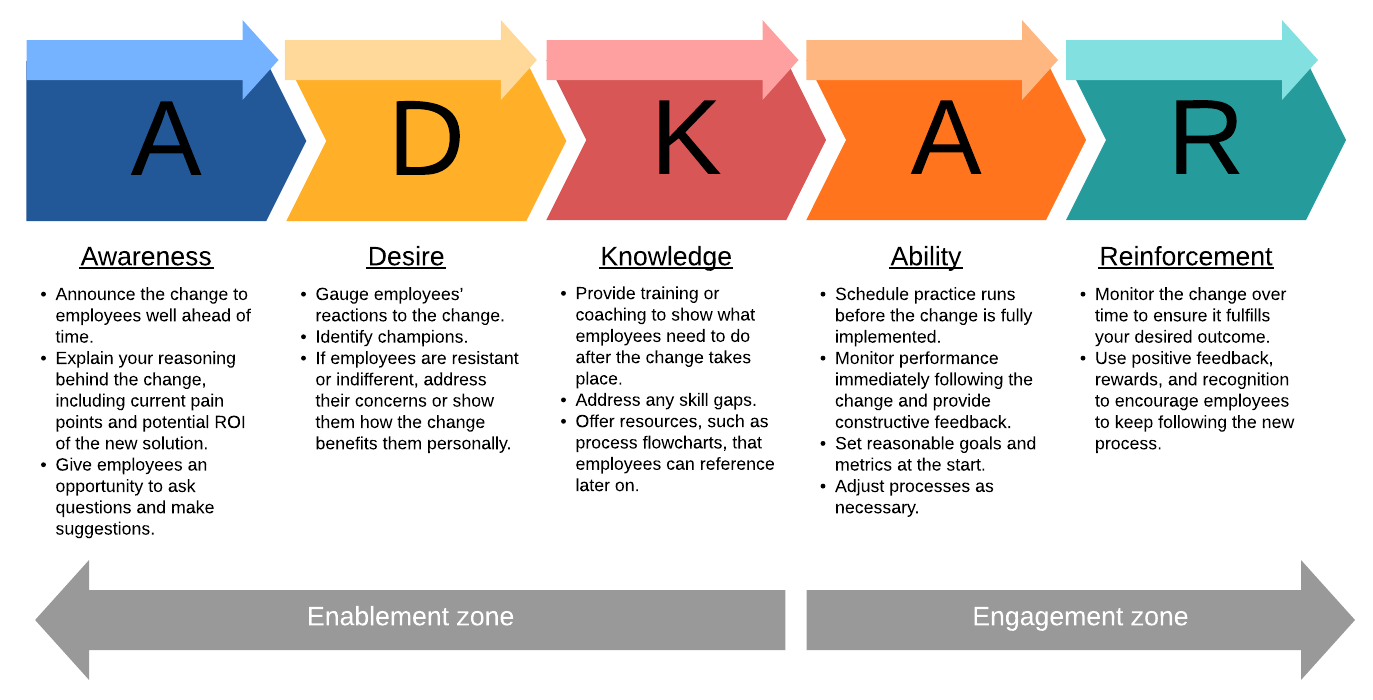Stakeholder engagement and communication as a lever for success
Stakeholder engagement is not an optional step, but the foundation of any successful change process. Studies show that projects with structured stakeholder engagement have a 30% higher success rate. The Prosci Stakeholder Engagement Plan (SEP) provides a systematic framework for this: It identifies key groups, analyses their influence and concerns, and develops tailored communication strategies.
A practical example from the electrical industry illustrates this: A group used workshops with senior management to identify resistance to a leadership culture transformation at an early stage. Through targeted training and interactive roadshows, the vision of an agile organisation was brought to life for 900 managers. The decisive factor here was the differentiation between willingness to change (emotional openness) and ability to change (resource-based ability), as the change management guide from doubleslash emphasises.
Kotter's 8-step model: blueprint for organisational change
John Kotter's model structures change processes in eight phases that systematically address emotional and structural hurdles:
- Creating urgency
Transparent communication of market pressure, competitive disadvantages or internal inefficiencies raises awareness of the need for action. Example: A financial services provider used customer surveys to show that outdated processes reduce customer satisfaction by 40 %. - Form a management coalition
E.g. A core team consisting of the CIO, HR and team leaders drives the transformation. One pharmaceutical company combined IT expertise with change competence. - Develop a vision
E.g. Goal formulations such as ‘AI-supported decisions by 2025’ provide orientation. The vision must appeal emotionally and guide action. - Communicate the vision
E.g. Multi-level formats (town halls, VR demos) communicate the strategy. One automotive supplier used interactive roadshows to bring the digitalisation vision to life. - Remove obstacles
E.g. "Innovation budgets" avoid bureaucratic approval processes. This enabled one retailer to quickly pilot new tools. - Celebrate short-term successes
E.g. a 20% leap in efficiency through RPA pilots was communicated via intranet TV - including team awards. - Consolidate changes
E.g. agile methods were integrated into project manuals on a mandatory basis. An energy supplier thus anchored DevOps practices. - Anchoring change
E.g. Bonus systems linked target achievement with the use of digital collaboration tools. Culture is controlled by incentive systems.

ADKAR model: Individual change management
Jeff Hiatt's framework focuses on the psychological transformation of each individual:
- Awareness
E.g. Transparent risk communication: A financial services provider visualised compliance violations through outdated workflows. - Desire
E.g. Emphasise personal benefits: A CRM project emphasised time savings for sales staff through automation. - Knowledge
E.g. Context-specific training: IT support staff received AI tool training based on real-life ticket scenarios. - Ability
E.g. ‘Sandbox environments’ enable risk-free experimentation. One insurer tested chatbot integrations in this way. - Reinforcement
E.g. Monthly ‘Digital Champion’ awards with career benefits promote sustainable behavioural change.

Synergy effects: Combination of both models
Phase-parallel application:
- Kotter's stages 1-3 correlate with ADKAR's Awareness/Desire: An energy supplier used market pressure analyses (Kotter) to simultaneously identify training needs (ADKAR).
- Levels 4-6 (Kotter) correlate with Knowledge/Ability: Agile onboarding of change agents simultaneously trains organisational and individual skills.
Change management as the key to sustainable transformation
Digital transformation is above all a cultural change in which technology only has an impact if people and organisations are willing to change. Sustainable success results from the combination of Kotter's 8-step model, which creates the organisational framework for change, and the ADKAR model, which promotes individual willingness and ability to change.
It is crucial that organisations see change management as a continuous process and core competence, in which at least 30% of resources should be invested in stakeholder engagement and communication. Resistance is not an obstacle, but valuable feedback that opens up room for manoeuvre. Companies that combine strategic vision and support create a learning organisation with a high level of adaptability - and demonstrably achieve significantly higher success rates with digitalisation initiatives. Perfection is not the goal; rather, iterative approaches and early involvement of all stakeholders lead to long-term success.
Key Take-Aways
- Change is not a project, but a continuous process (cf. Lewin's "permanent unfreezing")
- Technology follows culture - tools only take effect when people are ready
- Resistance is feedback - emotional reactions reveal unutilised design opportunities
